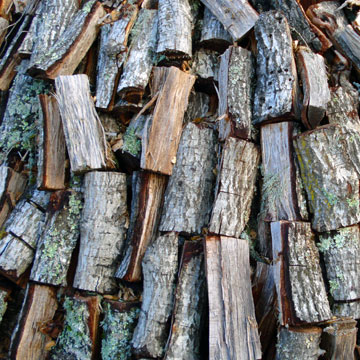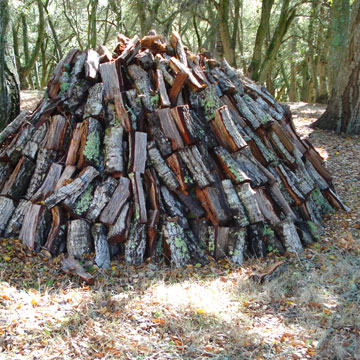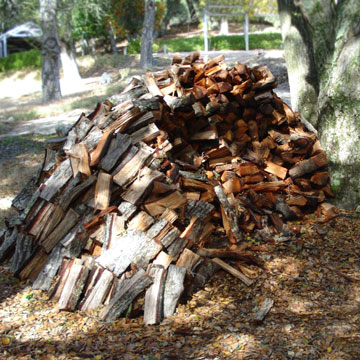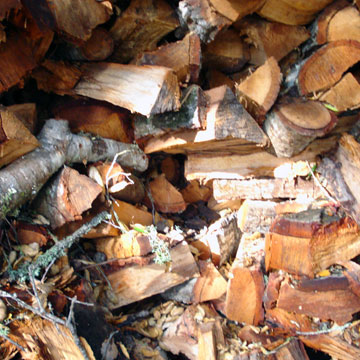Penny Stove Home | Instructions & FAQs | Alcohol Stove Myths | Penny Wood Stove | Favorite Recipes | 1/2 Penny Instructions | Links
|
My Backward Woodpile |
|
As an industrial designer, I have spent most of my life keeping up with new technologies. It's been exciting and interesting, but not always a positive experience. As new tech tools replace or alter old ones, skills, knowledge and techniques vanish - every gain is accompanied by a loss. These losses are often difficult or impossible to retrieve. So, when I saw my neighbor stacking and splitting his wood supply in a unique way, I made it a point to find out what was going on.
Dry and old wood is thrown into a tall pile. As this pile begins to take shape, the logs are thrown onto the pile so that they land vertically - some slide to the bottom. This starts to give the pile a 'shingled' look. Newly split wood is added to one side of the pile. Dry and old wood added to the other side. As the teepee starts to take shape, split logs are added around the perimeter as a base for new wood stacking or thrown on top. If possible the bark side faces the outside of the pile. Eventually you have a shingled teepee that sheds water, air dries the wood, and even keeps the ground dry underneath.
Over the winter, as wood is needed, it is taken from a 'hole' on one side. As logs are taken or fall in from the sides, the teepee eventually becomes a crescent. Even after days of rain, there is always some dry seasoned wood in the center of this shingled shed. And, since it is open to winter sun, any moisture that is blown into this area soon dries.
Next year, as you split wood, throw it on the pile to fill the hole in the crescent, and a new 'teepee' is started by adding green wood to fill the 'hole'. Next year, take wood from the other side of the pile and new wood will have additional time to season. Thank you Herb Johansson! |
|
|
|



